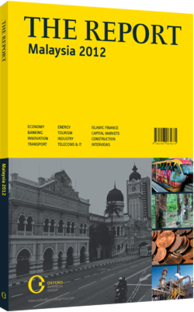There’s no place like home: Affordable housing schemes for middle-income buyers
Amid a constant stream of higher-end housing supply, Malaysia’s middle-class home buyers have often found themselves priced out of the market. “In the Malaysian residential market, there have long been significant offerings in the low-end market, around RM60, 000-RM150,000 ($19,356-48,390), and high-end properties above RM500,000 ($161,300). But affordable options serving the middle classes have been lacking,” Kumar Tharmalingam, the CEO of Malaysia Property, told OBG. Only in the past year, Tharmalingam said, have developers begun to address the mid-range offerings.
CURBING MEASURES: By and large, sector figures said the measures instituted by Bank Negara Malaysia – loan-to-value (LTV) and the net income-based loan calculations – would not affect the affordability of housing for first-time buyers. The decrease in loan approval rates does suggest that home buyers are finding it harder to get financing, but many argue that the decision allows Malaysia to avoid the kind of subprime-mortgage fiasco that sank the US economy in 2008.
What does divide many is the projected impact of “build then sell” (BTS), which some developers see as an unnecessarily far-reaching response to the issue of abandoned houses. The Real Estate and Housing Developers’ Association has argued that the proposed 2015 implementation of BTS would shrink housing supply by 80%. Alternatives to BTS have been suggested such as a trust-fund model in which buyers pre-commit their money to a banking institution, but developers do not receive the payout until they complete their project. They would be able to get bridging commercial loans based on the volume of presales held in abeyance by the bank. Others see BTS as a way to separate the wheat from the chaff when it comes to developers, noting that banks will be mostly inclined to lend to trusted partners with solid track records.
HOMES FOR ALL: The government has sought to expand the availability of affordable housing through its 1Malaysia Housing Programme (PR1MA), which targets first-time home buyers whose incomes are lower than RM7500 ($2420) per month but high enough to be ineligible for low-cost public housing. The scheme will subsidise private developers to build housing units costing between RM150,000 ($48,390) and RM300,000 ($96,780), which it would then distribute to recipients who met the criteria. The first 4000 PR1MA units are to be part of Sime Darby’s development in Bandar Ainsdale in Seremban, while projects are also planned for Cyberjaya, Putrajaya in Klang Valley, Kuantan and Johor.
The response to some initial offerings – where 560 units being lotteried in Putrajaya in October 2011 drew 7000 applicants – suggests that PR1MA has tapped into a potent source of demand but will be unable to fulfil it. Some have suggested that Malaysia adopt a dual housing model like that employed in Singapore, whereby the government provides affordable housing while the private sector constructs luxury real estate. Others have proposed offering additional tax incentives.
FOCUS ON AFFORDABILITY: PR1MA is just one part of a shift in the government’s focus from strictly low-cost housing to the more general affordable housing.
Since 1982 the housing policy has mandated that developers reserve 30% of units in new developments as low-income, which has created an oversupply of these units.
The National Property Information Centre data reveal that over half of overhang units at the end of 2011 cost below RM150,000 ($48,390), and developers complain about having to subsidise these unpopular units via higher prices on other properties.
Another government programme, Malaysia My First Home, attempts to offer affordable properties to low-income buyers that are more attractive to developers and customers. The scheme is designed to enable households earning less than RM3000 ($968) per month to buy houses costing up to RM400,000 ($129,040), but it attracted criticism in early 2012 for having seen zero loan approvals. A compromise offering – units that customers will buy, developers will build and banks will finance – appears to be elusive, due in part to the high cost of land seen in urban areas.
You have reached the limit of premium articles you can view for free.
Choose from the options below to purchase print or digital editions of our Reports. You can also purchase a website subscription giving you unlimited access to all of our Reports online for 12 months.
If you have already purchased this Report or have a website subscription, please login to continue.

